.jpg)
Hyundai Kona Electric Review
.jpg)
Introduction
One of the key drawbacks of electric cars, in the eyes of sceptics, is the relatively short range you can travel on a single charge compared to conventional fuel. But the Hyundai Kona Electric rejects those views, with up to 300 miles possible before you need to plug it in again. What’s more, you don’t have to pay through the nose for it. Emission-free driving aside, the Kona is a quirky-looking and impressively practical car that handles well and delivers zippy performance.
Select's rating score* - 4 / 5
At a Glance
Hyundai’s Kona first appeared in 2017, and an all-electric version followed not long after. It was a hit, and proved so popular that demand far outstripped supply, meaning it was rather difficult to get hold of one. Now those problems have been sorted out though, and this is the facelifted Kona Electric, introduced in 2021 to keep it fresh and competitive against an ever-increasing list of rivals, from the Kia e-Niro and Skoda Enyaq iV to the affordable MG ZS EV or more premium Mercedes-Benz EQB. Manufacturers are scrabbling to get electric SUVs on the market at such a pace that there’ll probably be more rivals available by the time you read this.
The Kona Electric’s appeal, aside from its unusual styling, lies with its impressive 300-mile range, if you go for the larger of the two battery options, as well as a relatively affordable price. Combine that with the peanuts you’ll spend on electricity compared to fuel, and it’s no wonder it’s proved so popular.
Key Features
The Kona Electric is a mid-size SUV that prides itself on being an affordable, all-electric family car. It comes with a choice of two batteries. The 39kWh battery gives you an official range of up to 189 miles, while the 64kWh battery gives you up to 300 miles and better acceleration too.
It was facelifted in 2021 with revised looks on the outside, and two new trim levels for extra choice, with more up-to-date equipment. Looks are always subjective but the Kona certainly stands out, with its main headlights mounted low, below the thin LED daytime running lights. Chunky cladding around the wheel arches accentuate the SUV look, but this is resolutely an on-road machine rather than an off-roader.
Inside, you’ve got plenty of storage space around the cabin, bang up-to-date infotainment features and a good safety record across the range, which consists of several trim levels to suit different price points.
.jpg)
Range & Batteries
There’s a choice of two batteries for the Kona Electric. The more affordable is the 39kWh battery, which gives you an official range of up to 189 miles, while the premium option is a 64kWh battery with a 300-mile range. We’ve driven the latter and, while official ranges are always slightly optimistic, a real-world range of 260 miles is easily achievable, and more if you do more around-town driving than out on the motorway.
All this means it can easily cover the vast majority of regular journeys without having to track down a charger.
Performance & Drive
The headline figures for the Kona Electric come from the more powerful 64kWh battery, which promises up to 300 miles on a charge and performance of 204 horsepower. We think this is the one to go for if you can; electric cars are generally much heavier than petrol or diesel rivals, so having a decent amount of power really helps make it feel sprightly. There’s plenty of zip to the acceleration when you put your right foot down, helped by the fact that electric motors deliver maximum oomph straight away, without having to wait for any revs to build.
If you’re on a budget, then you can also get a 39kWh battery with 136 horsepower. This has a 0-62mph time of 9.9 seconds, which isn’t particularly quick, but the quick response could make it enough if you mostly just pop around town.
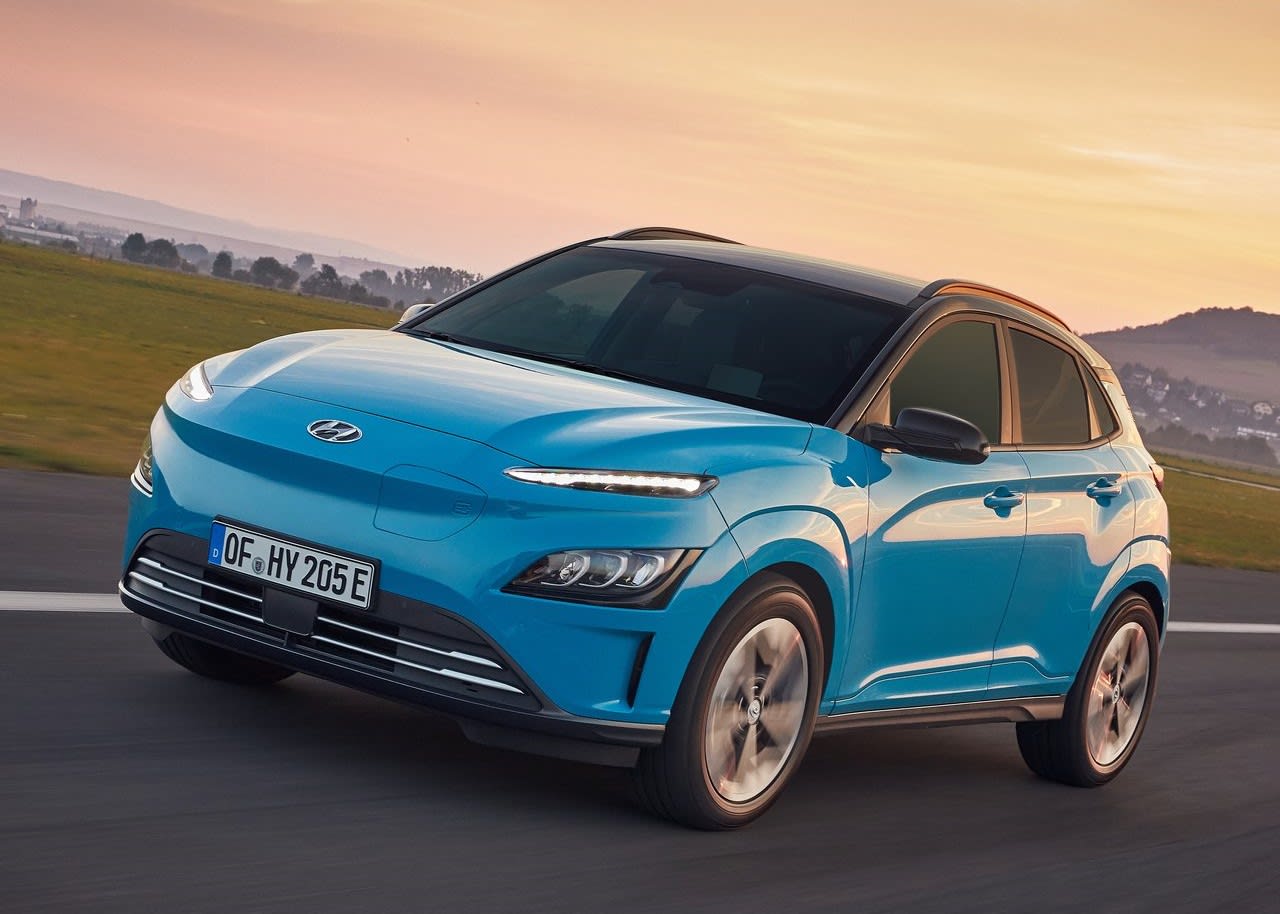
Acceleration aside, the Kona is perfectly competent in most conditions. It’s no enthusiast’s car, and it’s not as smooth and comfortable a ride as a Kia e-Niro, but it sits somewhere in the middle. The ride is firm enough that you’ll feel bad road surfaces underneath you, but it’s never particularly annoying and it means that body roll is kept well in check through the corners. The steering is weighted to feel relatively confident at higher speeds and make manoeuvring straightforward when moving slower, but it lacks the directness and accuracy to really make you want to enjoy a country road. Wind and road noise could be better suppressed at higher speeds, but the lack of engine noise means that it’s nice and quiet around town.
Like most electric cars these days, you can adjust the amount of energy recuperation when you lift off the accelerator. Kinetic energy from cruising or braking is collected and put back into the battery, and has the effect of also acting like a brake. Using wheel-mounted paddles you can increase or decrease this. At maximum settings you don’t really need to use the brake pedal and can cruise around town by pressing and lifting off the accelerator. But at higher speeds you may want to decrease it slightly to allow longer periods of coasting.
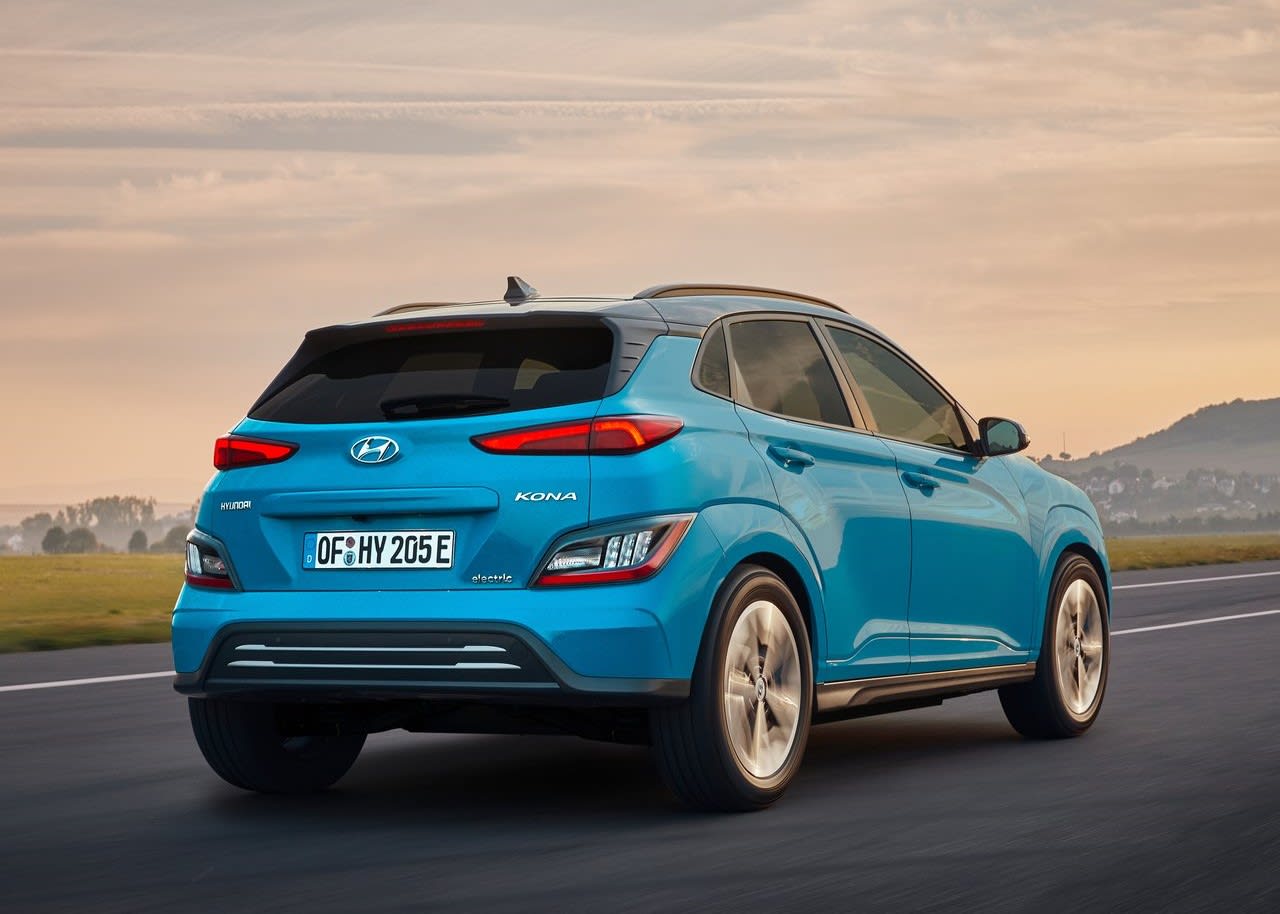
Charging
If you use a standard 7kW home charger, you can charge the 64kWh battery from 10% to 100% in 9 hours 15 minutes, which makes it ideal for an overnight recharge. The 39kWh battery takes six hours.
Using a 100kW rapid charging station, you can top the battery up from 10% to 80% in 47 minutes, or 64 minutes with a 50kW charger.
If you don’t have a home charger, you can charge with a regular three-pin plug, but it’ll take you the best part of a full day to get from nearly empty to 100%. We’d strongly recommend investing in a 7kW wall box if you do decide to lease this, or any electric car.
A Type 2 cable and a three-pin cable are included as standard.
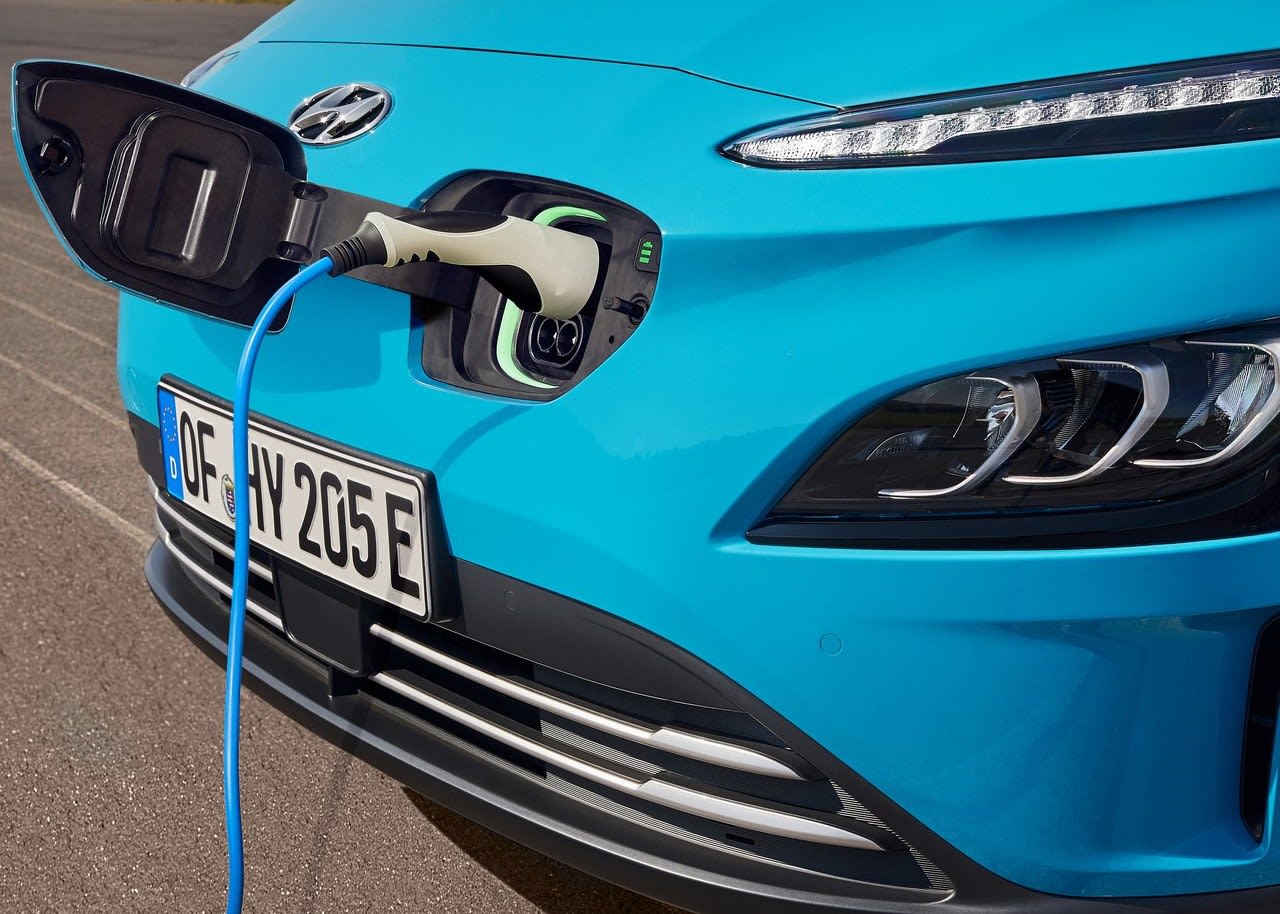
Running Costs & Emissions
Electric cars tend to be more expensive to lease than their petrol or diesel-powered equivalents, and that’s usually the case with the Kona, although at the time of writing there are some very attractive special offers that make it similarly priced to petrol or hybrid models. Overall, the premium for electric is relatively small, and you can pick up a Kona Electric for less than a Kia e-Niro, Skoda Enyaq or Volkswagen ID.4. An MG ZS EV is more affordable though.
However you charge your Kona Electric, you’ll pay less than you would for petrol. The most efficient way to do it would be overnight using a home charger, if you’ve got an electricity tariff that’s cheaper during off-peak hours. You can also charge at public fast chargers, which is quicker, and useful on long journeys, but will cost considerably more.
Insurance costs should be reasonable, with the Kona Electric’s insurance groups ranging between 20 and 24 of 50, although this is quite a few groups above the petrol and hybrid models.
Electric vehicles have no polluting CO2 emissions while driving, which is excellent news for company car drivers. They’ll pay just 1% benefit-in-kind company car tax for 2021/22, which is far below any petrol, diesel or hybrid car.
Interior & Technology
The unusual exterior of the Kona isn’t quite replicated inside; it’s more traditional in its design, although there are a few nice touches that make it stand out. Chief of these is the two-level centre console between the front seats, which has two levels of storage. A large touchscreen infotainment system dominates the middle of the dashboard. More on that in a moment.
Build quality feels solid, and while the plastics won’t compare to premium offerings from Audi or Mercedes-Benz, they don’t feel cheap either. That said, if you’re leasing the top-end models, you might wish it was a big more fancy for the money.
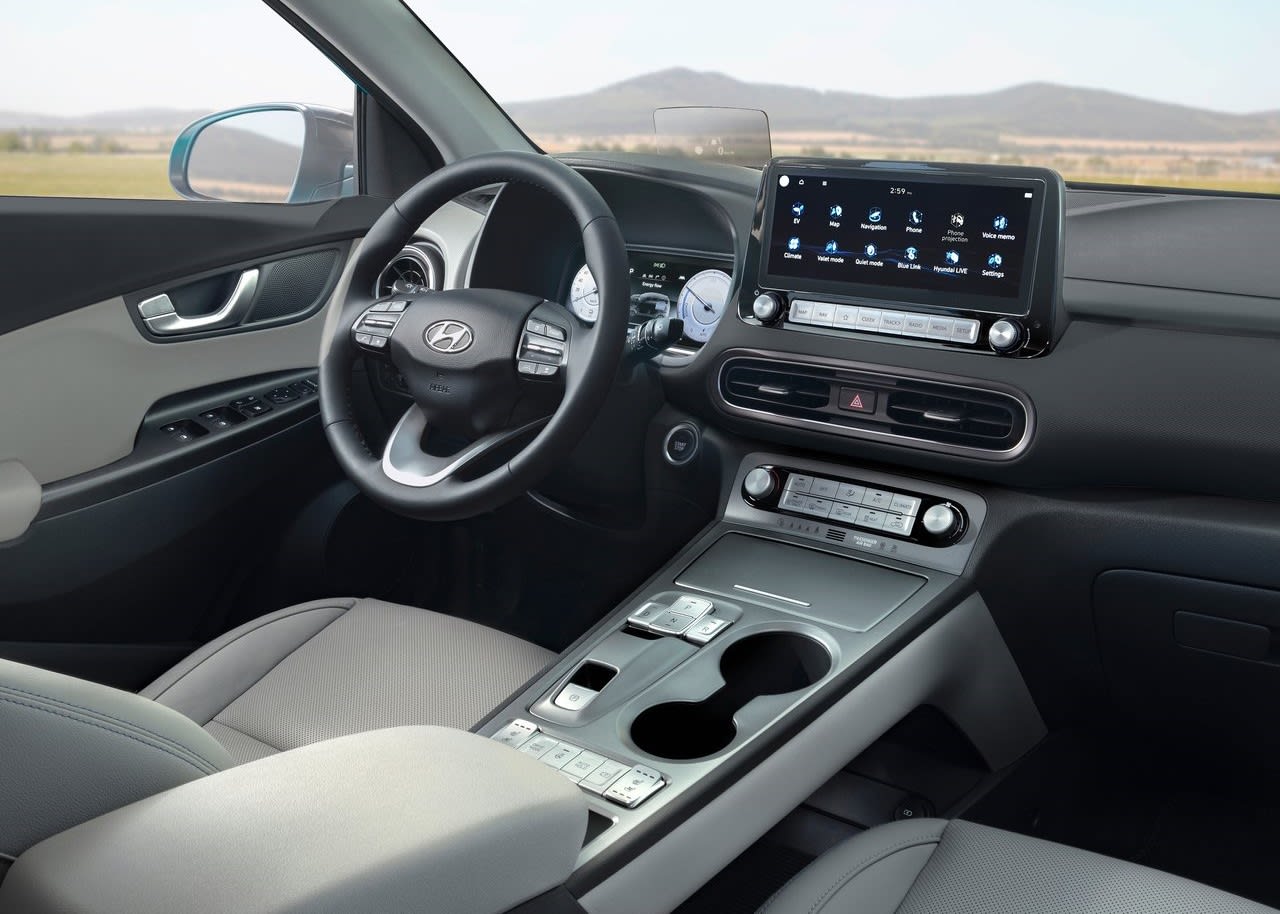
The seating position is relatively high, as befits an SUV, but there’s plenty of adjustment in the driver’s seat on all models, and the steering column moves for both reach and rake.
All Kona Electrics get a pair of 10.25-inch screens; one in front of the driver, replacing traditional instruments, and one touchscreen in the centre of the dashboard. The touchscreen can be a bit fiddly to adjust on the move, but there are at least shortcut buttons and dials below it for the simplest of things, as well as controls on the steering wheel. It includes Apple CarPlay and Android Auto, and there’s even a “Sounds of nature” setting, which plays the noises of rain, a crackling fireplace and various other soothing sounds as you drive.
Hyundai’s Bluelink app lets you connect to the car from your smartphone and monitor or set various systems from afar, such as charge, route planning and climate control.
Top-spec Ultimate models also get a head-up display, which projects driving information onto a small transparent screen at the bottom of the windscreen, making it easier to see essential details without glancing away from the road.
All models also get an eight-speaker Krell sound system, and wireless charging for mobile phones is included on Premium and Ultimate models.
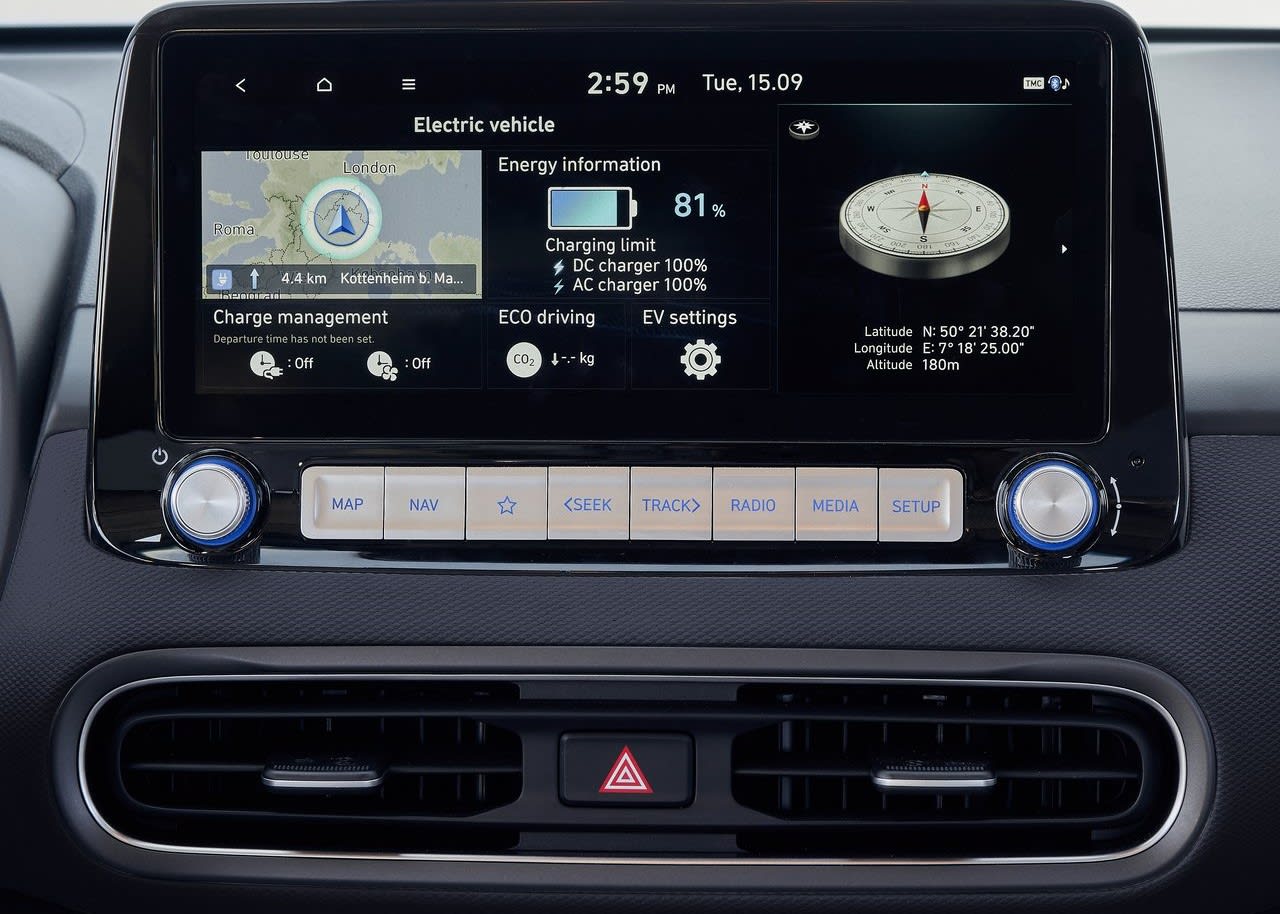
Practicality & Boot Space
There’s plenty of passenger space inside the Kona Electric, and all but the tallest adults should have no issues in the back seats, although there are rivals that boast more legroom, such as the Kia e-Niro and MG ZS EV. The boot will handle a reasonable amount but at 332 litres capacity, it’s not the largest on the market, and some space under the floor is taken up by charging cables. In comparison, the e-Niro will give you 451 litres of space. The boot floor is flush with the bottom of the opening though, so there’s no lip to lug stuff over, and the rear seats fold down in a 60/40 split if you need to load in larger items. That expands the space to 1,114 litres.
As well as a glove box, you can store odds and ends in a space under the front armrest, on a tray beneath the main centre console or in a storage area in front of the park, drive, reverse and neutral buttons. There are two cupholders in the centre as well.
Safety
The Kona Electric hasn’t specifically been tested by independent safety organisation Euro NCAP, but the regular Kona has, and scored the maximum five stars. Lots of up-to-date safety tech is included as standard, including automatic emergency braking with the capability to spot potential collisions with pedestrians and cyclists, as well as other vehicles. Premium models add a blind spot monitoring and warning system, and a rear cross-traffic system that lets you know about oncoming traffic when you’re reversing out of a parking space.
All models get front, side and curtain airbags, and Isofix child seat mounting points on the outer rear seats.
Options
There are three trim levels to choose from in the Kona Electric, starting with SE Connect. It’s well-specced, with 17-inch alloy wheels, satnav and the big touchscreen system, climate control air-conditioning and a rear parking camera with parking sensors. On top of that, you’ll get keyless entry and a start/stop button – no need to twist a key.
Every model has adaptive cruise control, which is tremendously useful in slow traffic and on the motorway. Set your preferred speed and it’ll monitor for vehicles in front of you, automatically slowing down and maintaining a set gap, then speeding back up again once the slower vehicle gets out of the way.

The Premium model adds heated front seats and bright full LED headlights, as well as the extra safety systems mentioned above. Front parking sensors and tinted rear windows are added too.
The top-spec model is the Ultimate, which adds electric front seat adjustment and a ventilation system in the front seats, which can be very welcome on a hot day. The head-up display is included too, the outer rear seats are heated and the seat is trimmed in black leather. Oh, and there’s a sunroof as well.
It’s worth noting that the 39kWh battery is only available with the SE Connect and Premium trims, and the 64kWh battery with the Premium and Ultimate models.
Options are very minimal, and are restricted to various paint colours and a heat pump, which helps improve battery performance in particularly low temperatures. That could be worth considering if you live, say, in the north of Scotland, but some other EVs include such tech as standard.
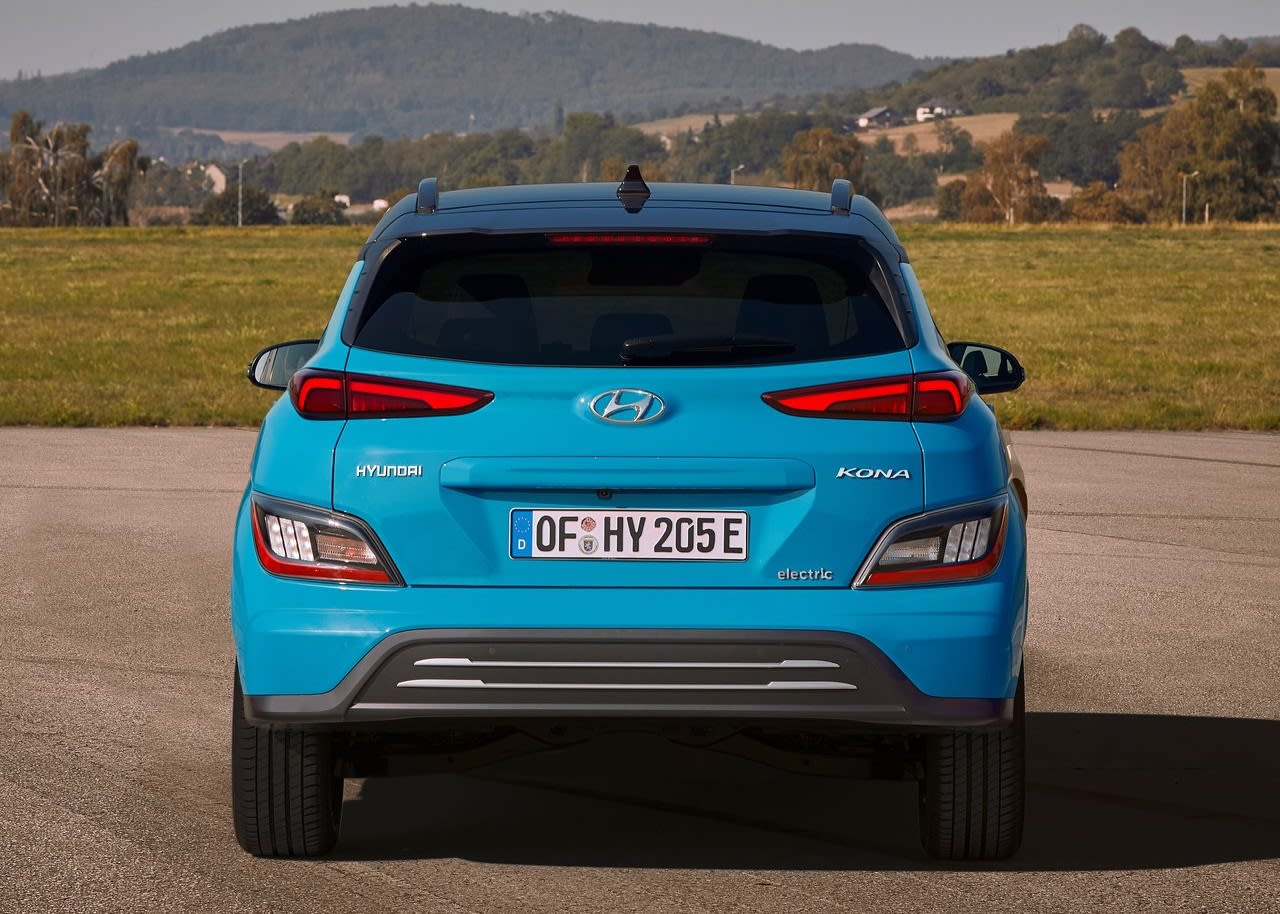
Rival Cars
If you’re in the market for an electric SUV then there’s an increasing amount of choice. The most obvious rival is the Kia e-Niro, which has several practicality advantages over the Kona, but will cost you more per month at the time of writing. Newer rivals include the Skoda Enyaq iV and Volkswagen ID.4, which are very accomplished but again will set you back more cash. If you want something else with quirky style, then check out Peugeot’s e-2008
If you want to save money then the MG ZS EV is well worth looking at, although its 143-mile range is only about half of the top-spec Kona Electric. Conversely, if you have a good budget then you might want to consider a more premium SUV EV. Mercedes-Benz’s forthcoming (at the time of writing) EQB could be worth a look.
Of course, if electric power isn’t a priority then there’s a vast range of petrol, diesel or hybrid SUVs to choose from.
Verdict & Next Steps
The Hyundai Kona Electric majors on two things – an impressive range at an impressive price. It might not be quite as good as some of its rivals in some areas, but it’s at the very least competent at everything. Overall, that makes it a very compelling prospect, and in our book it should be near the top of the short list of any prospective SUV EV customer. You can get more practical, better driving or cheaper electric SUVs, but you’ll struggle to find much to match the balance that the Kona Electric has managed to find.
Where to next?
View latest Hyundai Kona Electric leasing deals - guide price from £241.88 per month inc VAT**
Looking for a great deal? Check out our incredible range of car lease deals
New electric SUV? Read our latest Reviews and find the right model for you
Want to know more about leasing? Take a look at our comprehensive Leasing Guides
Interested in everything motoring? Why not catch up on all the latest Car Leasing News.
*Score based on Select’s unique meta score analysis, taking into account the UK’s top five leading independent car website reviews of the Hyundai Kona Electric
**Correct as of 25/05/2021. Based on 9 months initial payment, 5,000 miles over a 48 month lease. Initial payment equivalent to 9 monthly payments or £2176.96 Ts and Cs apply. Credit is subject to status.





















